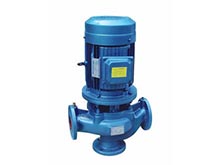The self priming sewage pump integrates self priming and non-blocking sewage discharge, adopts axial recirculation and external mixing, and through the unique design of the pump body and impeller flow passage, it can be installed like the general self priming pump without installing the bottom valve and irrigation. Water diversion, and can also contain liquids containing large particles of solids and long fibers, which can be widely used in municipal sewage engineering, river pond culture, light industry, papermaking, textile, food, chemical, electric industry, fiber, slurry and hybrid suspension. It is the most ideal impurity pump for chemical medium.
Regarding the common faults of the sewage pump and its troubleshooting methods, I made some conclusions here:
1. Insufficient water. Eliminate the blockage, replace the impeller, and adjust to the rated speed.

2. The pump does not produce water. Eliminate air leakage in the pipeline, add sufficient liquid to the pump body, adjust the voltage, reduce the suction stroke or shorten the pipeline, repair or replace the mechanical seal.
3. Pump noise and vibration are too large. Replace the worn bearing, adjust the concentricity of the motor shaft and the pump shaft, fasten the connection parts of the motor and the sewage pump, and remove the foreign matter in the impeller.
4. The sewage pump leaks. Fully balance and tighten the bolts of the pump casing and replace the wear seals.
5. The temperature of the sewage pump bearing is too high. Replace the bearing lubricant that meets the standard and replace the unqualified bearing.
6. The motor is overloaded. When the motor is overloaded, the overload device will automatically stop and stop due to excessive current. The voltage can be adjusted to the normal area, and the pump shaft gland and shaft seal tightness can be adjusted appropriately. Replace the pump shaft, dilute the viscosity of the transport liquid to meet the specified requirements, replace the unbalanced impeller or clean the debris in the impeller.
